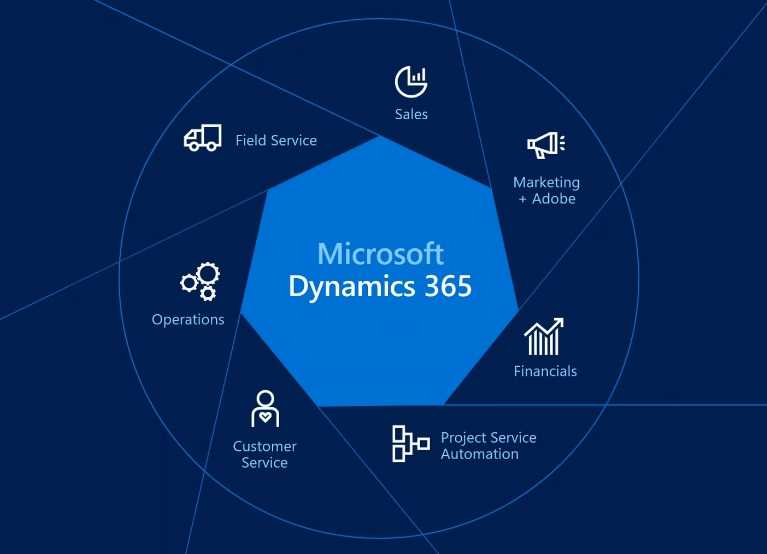1: Overview of Reporting and Dashboards in Dynamics 365
1.1 Introduction to Reporting and Dashboards in Dynamics 365
1.2 Review of Basic Reporting and Dashboard Features
1.3 Understanding Data Sources and Entities in Dynamics 365
1.4 Overview of Intermediate Reporting Techniques
1.5 Setting Up the Training Environment
1.6 Hands-on Exercise: Reviewing Existing Reports and Dashboards in Dynamics 365
2: Customizing Dynamics 365 Reports
2.1 Customizing Built-In Reports in Dynamics 365
2.2 Using Advanced Filters and Query Options
2.3 Grouping, Sorting, and Summarizing Data
2.4 Adding Custom Fields and Calculations to Reports
2.5 Hands-on Exercise: Customizing an Out-of-the-Box Report
3: Introduction to Power BI for Dynamics 365
3.1 Overview of Power BI and Its Integration with Dynamics 365
3.2 Connecting Power BI to Dynamics 365 Data Sources
3.3 Exploring Power BI Dashboards and Reports
3.4 Understanding Power BI Data Models and Relationships
3.5 Hands-on Exercise: Setting Up a Power BI Report with Dynamics 365 Data
4: Building Advanced Reports with Power BI
4.1 Creating Complex Data Models in Power BI
4.2 Using Advanced DAX Functions for Data Analysis
4.3 Implementing Drill-Down and Drill-Through Features
4.4 Designing Interactive and Dynamic Reports
4.5 Hands-on Exercise: Developing an Advanced Power BI Report for Dynamics 365
5: Dynamics 365 Dashboard Customization
5.1 Customizing Dynamics 365 Dashboards for Different Roles
5.2 Adding Charts, Lists, and Visualizations to Dashboards
5.3 Creating Interactive Dashboards with Filters and Drilldowns
5.4 Best Practices for Dashboard Layout and User Experience
5.5 Hands-on Exercise: Building a Customized Dashboard in Dynamics 365
6: Advanced Data Visualization Techniques
6.1 Principles of Effective Data Visualization
6.2 Choosing the Right Visualizations for Your Data
6.3 Enhancing Reports and Dashboards with Custom Visuals
6.4 Using Themes and Customizations to Improve Visual Appeal
6.5 Hands-on Exercise: Applying Advanced Data Visualization Techniques to Dashboards
7: Performance Optimization for Reports and Dashboards
7.1 Understanding Performance Considerations in Dynamics 365 Reporting
7.2 Techniques for Optimizing Report and Dashboard Performance
7.3 Managing Large Datasets and Reducing Load Times
7.4 Best Practices for Efficient Data Retrieval and Processing
7.5 Hands-on Exercise: Optimizing the Performance of a Complex Report
8: Sharing, Exporting, and Embedding Reports and Dashboards
8.1 Sharing Reports and Dashboards with Different User Groups
8.2 Exporting Reports to Excel, PDF, and Other Formats
8.3 Embedding Power BI Reports in Dynamics 365
8.4 Configuring Security and Access Controls for Reports and Dashboards
8.5 Hands-on Exercise: Sharing and Embedding Reports in a Dynamics 365 Environment
9: Real-Time Reporting and Dashboards
9.1 Setting Up Real-Time Data Feeds in Dynamics 365
9.2 Configuring Streaming Datasets in Power BI(Ref: Create and use analytics reports with Power BI)
9.3 Implementing Real-Time Dashboards for Critical Metrics
9.4 Monitoring and Maintaining Real-Time Reporting Solutions
9.5 Hands-on Exercise: Creating a Real-Time Dashboard in Dynamics 365
10: Integrating External Data Sources
10.1 Connecting Dynamics 365 to External Data Sources (SQL, Excel, etc.)
10.2 Using Power Query for Data Transformation and Integration
10.3 Merging and Joining External Data with Dynamics 365 Data
10.4 Hands-on Exercise: Integrating External Data into Dynamics 365 Reports and Dashboards
11: Capstone Project: Designing a Comprehensive Reporting and Dashboard Solution
11.1 Project Overview: Developing a Complete Reporting and Dashboard Solution
11.2 Defining Reporting Requirements and KPIs
11.3 Designing and Implementing Advanced Reports and Dashboards
11.4 Ensuring Performance Optimization and User Accessibility
11.5 Hands-on Exercise: Developing and Presenting the Capstone Project
12: Certification Preparation and Next Steps
12.1 Preparing for Microsoft Dynamics 365 and Power BI Certification Exams
12.2 Review of Key Concepts and Best Practices
12.3 Study Tips and Resources for Certification
12.4 Exploring Further Learning Opportunities in Dynamics 365 Reporting
12.5 Course Wrap-Up and Feedback
12.6 Final Q&A and Course Completion







Reviews
There are no reviews yet.